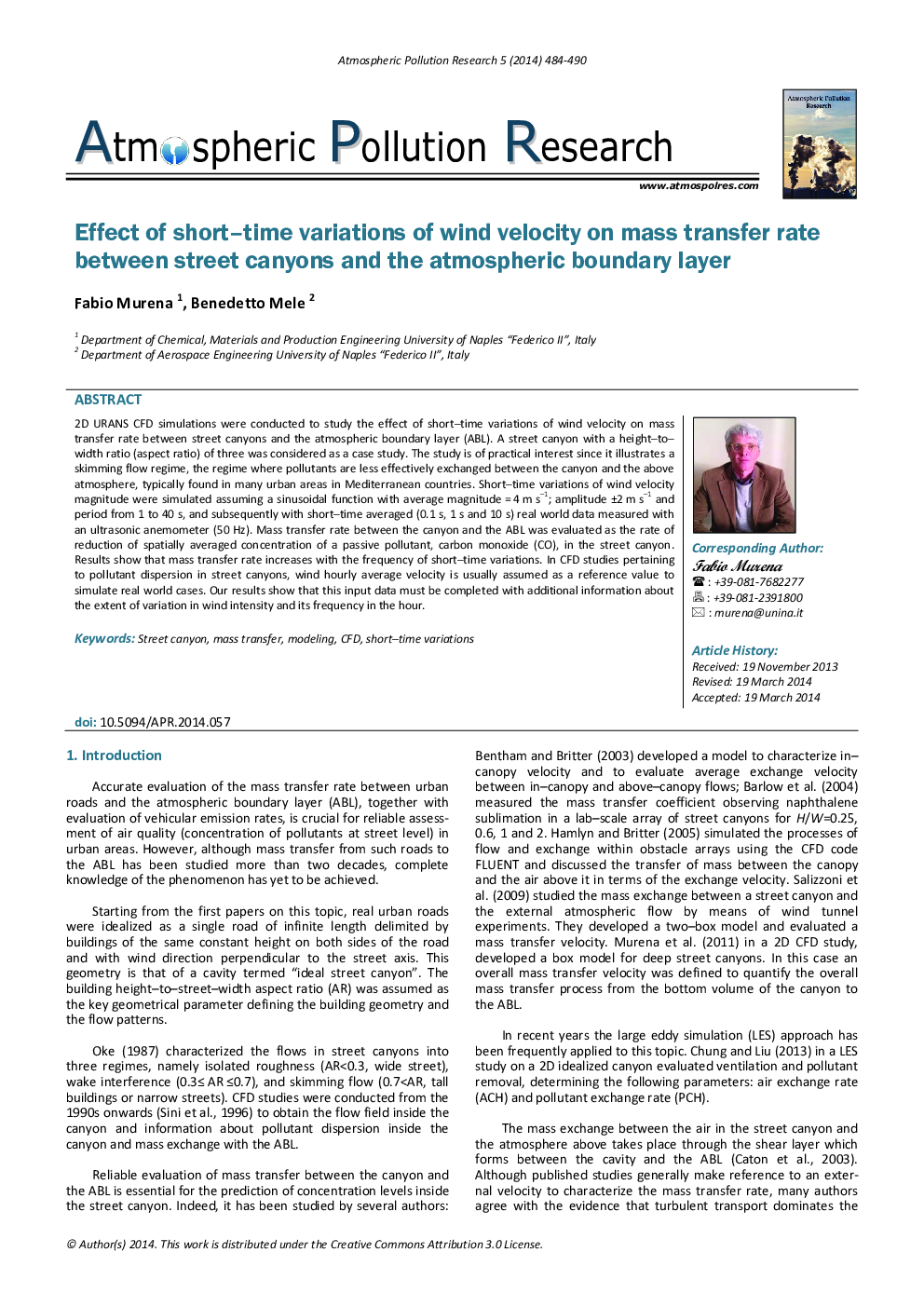| کد مقاله | کد نشریه | سال انتشار | مقاله انگلیسی | نسخه تمام متن |
|---|---|---|---|---|
| 4434618 | 1310519 | 2014 | 7 صفحه PDF | دانلود رایگان |
2D URANS CFD simulations were conducted to study the effect of short–time variations of wind velocity on mass transfer rate between street canyons and the atmospheric boundary layer (ABL). A street canyon with a height–to– width ratio (aspect ratio) of three was considered as a case study. The study is of practical interest since it illustrates a skimming flow regime, the regime where pollutants are less effectively exchanged between the canyon and the above atmosphere, typically found in many urban areas in Mediterranean countries. Short–time variations of wind velocity magnitude were simulated assuming a sinusoidal function with average magnitude = 4 m s−1; amplitude ±2 m s−1 and period from 1 to 40 s, and subsequently with short–time averaged (0.1 s, 1 s and 10 s) real world data measured with an ultrasonic anemometer (50 Hz). Mass transfer rate between the canyon and the ABL was evaluated as the rate of reduction of spatially averaged concentration of a passive pollutant, carbon monoxide (CO), in the street canyon. Results show that mass transfer rate increases with the frequency of short–time variations. In CFD studies pertaining to pollutant dispersion in street canyons, wind hourly average velocity is usually assumed as a reference value to simulate real world cases. Our results show that this input data must be completed with additional information about the extent of variation in wind intensity and its frequency in the hour.
Journal: Atmospheric Pollution Research - Volume 5, Issue 3, July 2014, Pages 484–490
